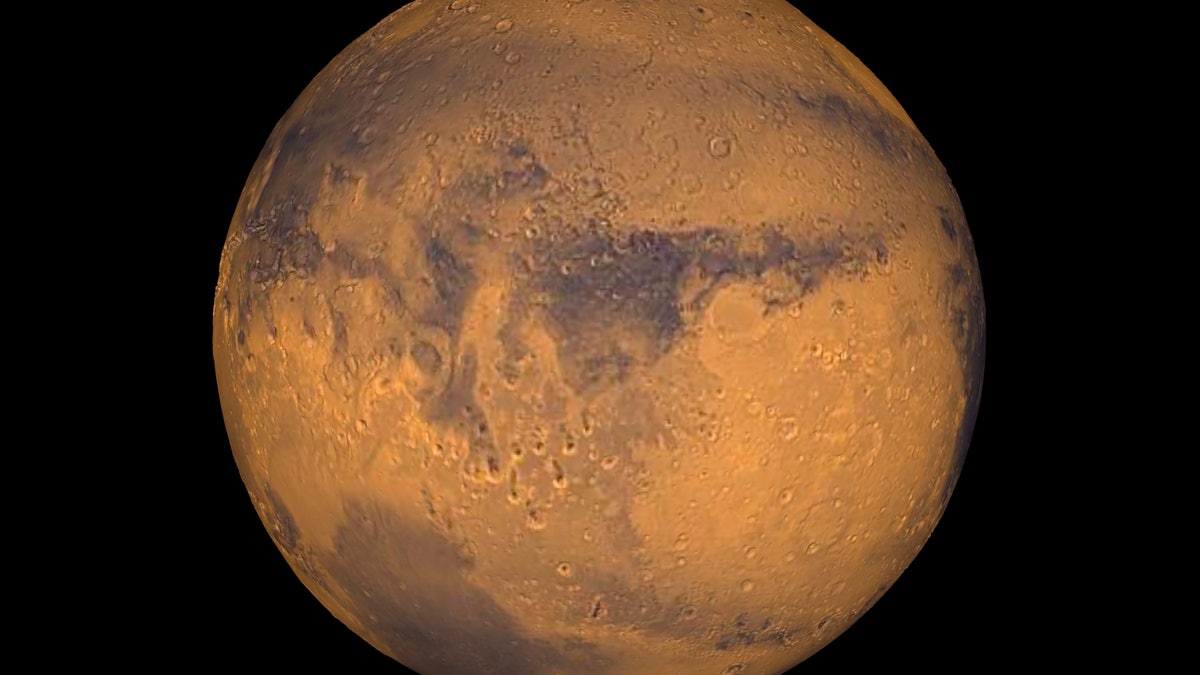
The planet Mars showing showing Terra Meridiani is seen in an undated NASA image. (REUTERS/NASA/Greg Shirah/Handout)
Today, as America plans to lead efforts to send humans to Mars in the early 2030s, it is important to clearly articulate the rationale for undertaking such ambitious missions.
This often has been a challenge, as there are dozens of compelling reasons to pursue such a goal. However, those reasons can be succinctly organized into the six categories set forth below. In addition, unlike the Cold War motivation of the 1960s that led us to the moon, the reasons for going to Mars are likely to result in a program that is far more sustainable than the Apollo lunar program, which ended in 1972 after only a handful of missions.
The reasons for sending humans to Mars fall within the following categories:
1. Discovery and Scientific Knowledge: Mars is the most scientifically interesting location in our solar system that humans can reach in the foreseeable future. Although robotic exploration of Mars over the past 50 plus years has provided us with a wealth of information and incredible discoveries, most experts agree that it will probably take human explorers to determine whether there ever was or even still is life on Mars and to conduct many other scientific investigations that are not possible with robots alone.
2. Inspiration and Innovation: Space exploration is widely recognized to be one of the most effective ways to inspire students to become interested in STEM education and it is a well-known driver of technology and innovation. Returning to the Moon after 50 years is unlikely to require major advancements in technology. In contrast, an ambitious mission to the next frontier of Mars will inspire new generations of engineers, scientists, physicians, innovators, educators, and industrialists to reach for the stars.
3. Prosperity and National Morale: Apart from national prestige, morale is essential for a nation’s growth and prosperity. U.S. led missions to Mars would not only make a bold and unequivocal statement that we are still capable of great things – perhaps the greatest achievement in human history – but it would also dramatically improve our national outlook and economy. Building on lessons learned from the International Space Station (ISS), commercial partners are anticipated to have a major and innovative role in the exploration of Mars. This involvement will be the underpinning of new and incredibly promising industries for the next century.
4. Security and Diplomacy: While Mars missions will not be run by the military, many of the capabilities required to achieve these missions have potential security applications. In addition, an ambitious and strong space program can be one of our most effective diplomatic tools, as people around the world look at our space program with awe and appreciation.
5. Advancement and Expansion of Humanity: Can humans establish a permanent presence on another planet? Mars offers the potential for self-sufficiency that simply is not possible anywhere else in the solar system with our current levels of technology. Mars has water, an atmosphere, and other resources that should allow us to live off the land. But, we won’t know if a permanent presence is possible until we try.
6. To Understand Earth: Mars is the planet in our solar system that is most similar to Earth. Mars used to be a warm and wet planet like Earth, when Mars had a much thicker atmosphere than it does today. What happened – and could the same thing happen on Earth? Our analysis of what could happen to the Earth cannot be based on just one data point – that of the Earth. It is imperative to understand the evolutions of other planets, particularly planets like Earth so that we can wisely take care of our home.
In addition to these overarching societal reasons, there are some immediate political and commercial reasons to keep Mars as the focus of our human spaceflight program.
1. Congressional Support: Mars has stronger support than any other destination for human space flight, and this support has been consistently bi-partisan in nature. This has been made clear by numerous NASA Authorization bills, as well as in a NASA Transition Bill that was passed by the Senate in late 2016.
2. Industry Support: Numerous American corporations have invested time and resources in designing mission architectures to send humans to Mars. Companies like Boeing, SpaceX, Lockheed, and Aerojet Rocketdyne have released plans and other companies have provided valuable concepts on how we can conduct these missions in an affordable manner.
3. Public Support and Enthusiasm: Unlike the Moon, Mars continues to generate significant public interest and support, especially with young people. Hollywood has recognized this interest and responded with successful movie and television projects. Recent polls have confirmed that support for Mars exploration remains high.
4. Humans to Mars is Affordable and Achievable: Recent workshops and studies have also shown that missions to Mars are both achievable and affordable. NASA will not require a large increase in its budget to achieve this goal of landing humans on Mars by 2033.
There is no doubt that Mars will be challenging. But after 55 years of human space flight, 50 years of studying Mars, 16 years of permanent presence onboard the ISS, a massive expansion of international and commercial space capabilities, and years of Mars forward technology development, we are far more ready to send humans to Mars than the nation was when President John F. Kennedy committed the U.S. to landing humans on the Moon.
Mars is our challenge, and our opportunity.








































